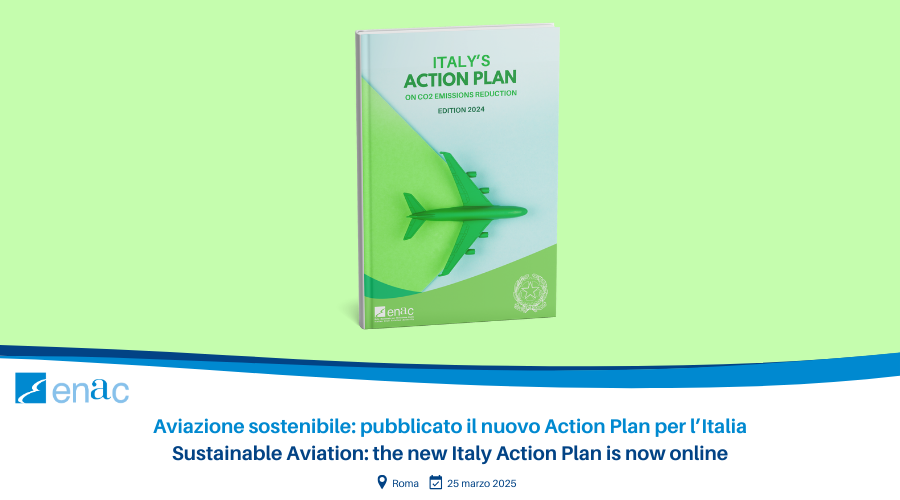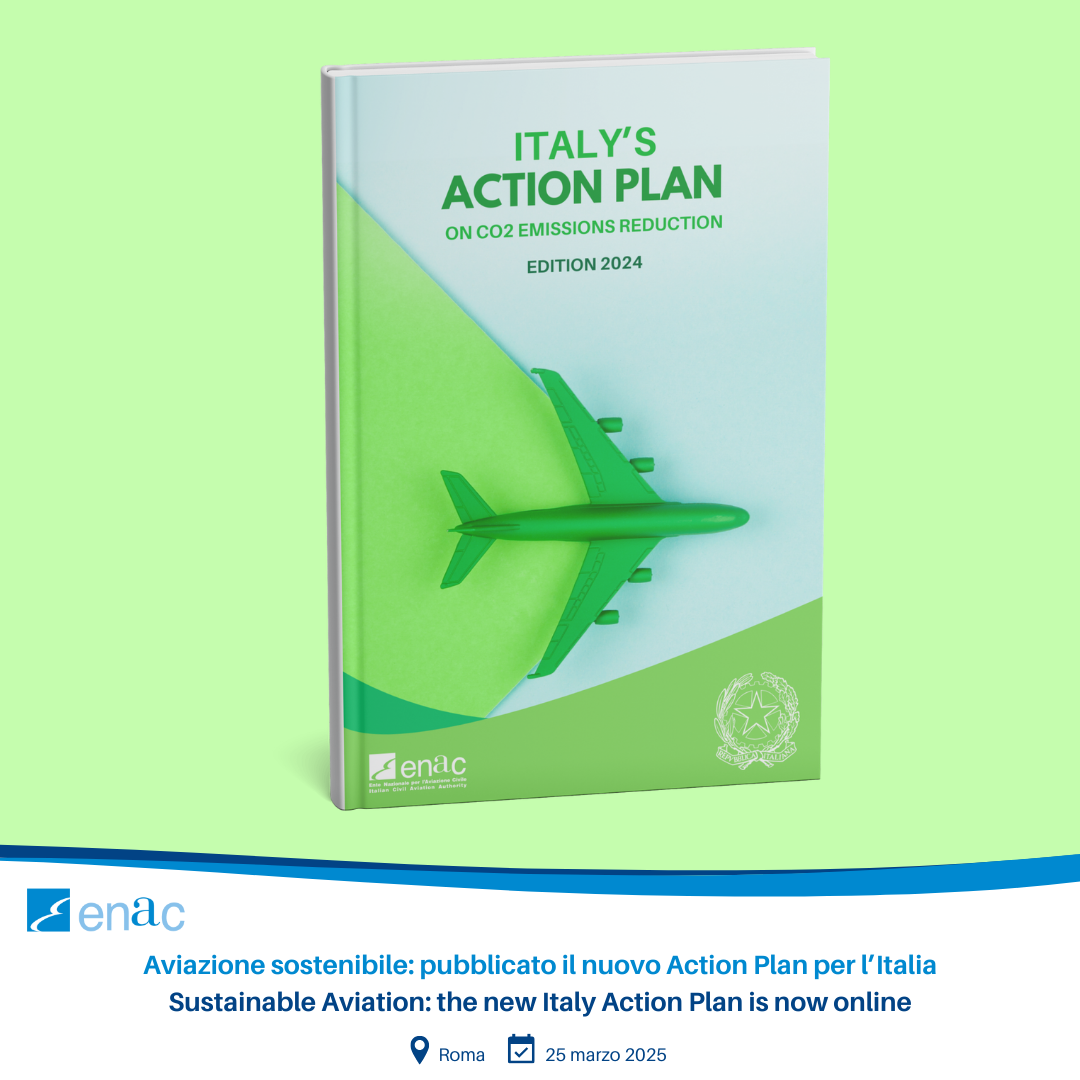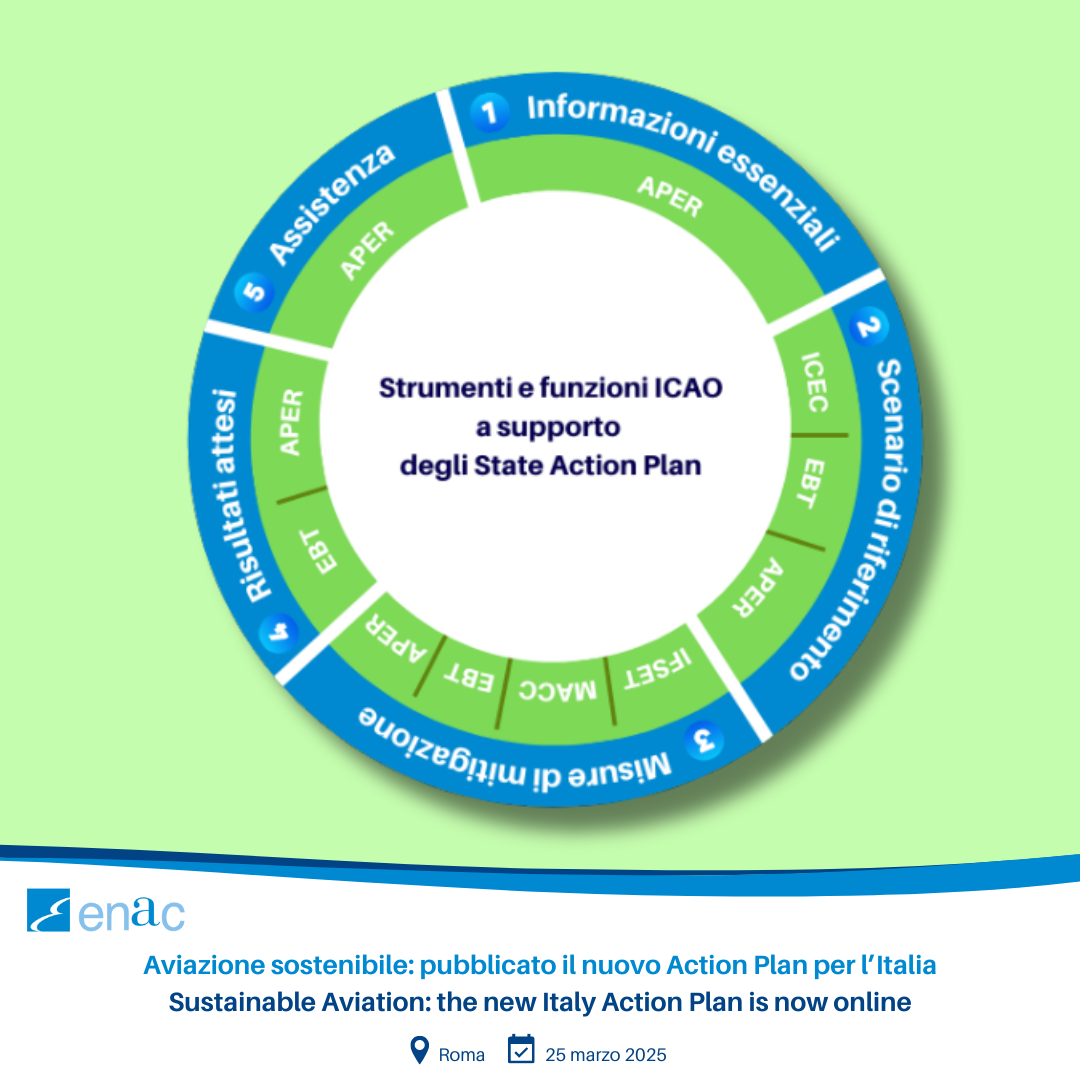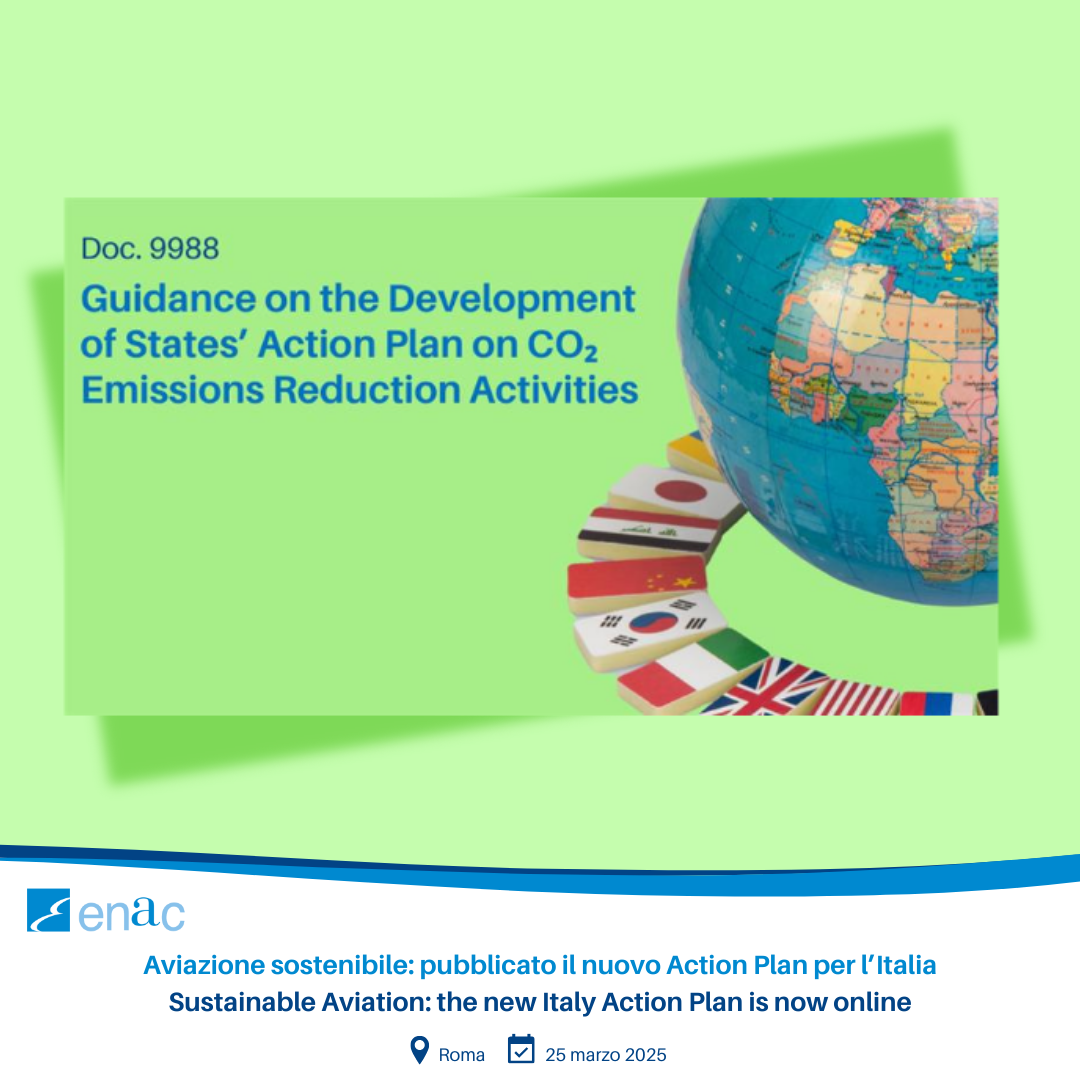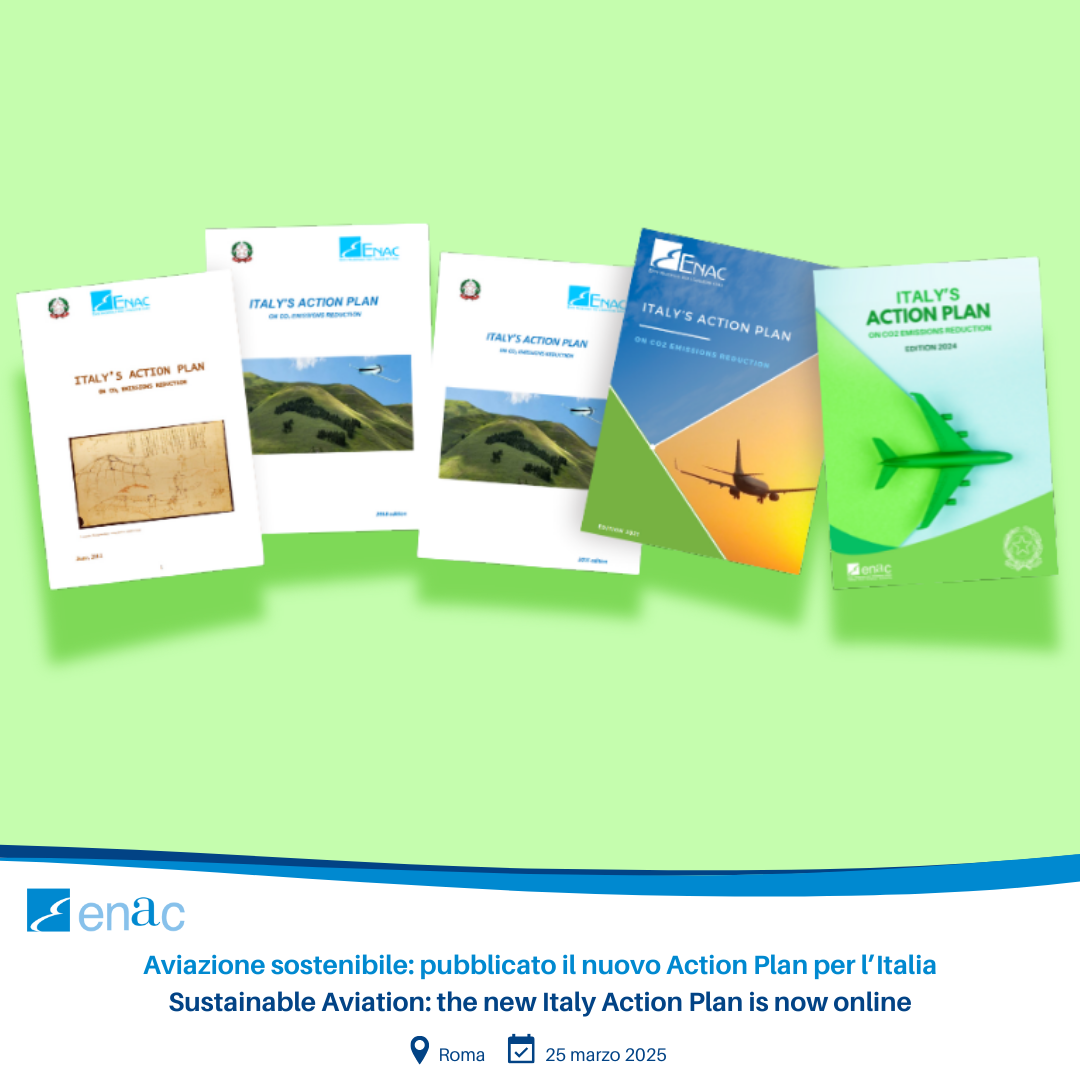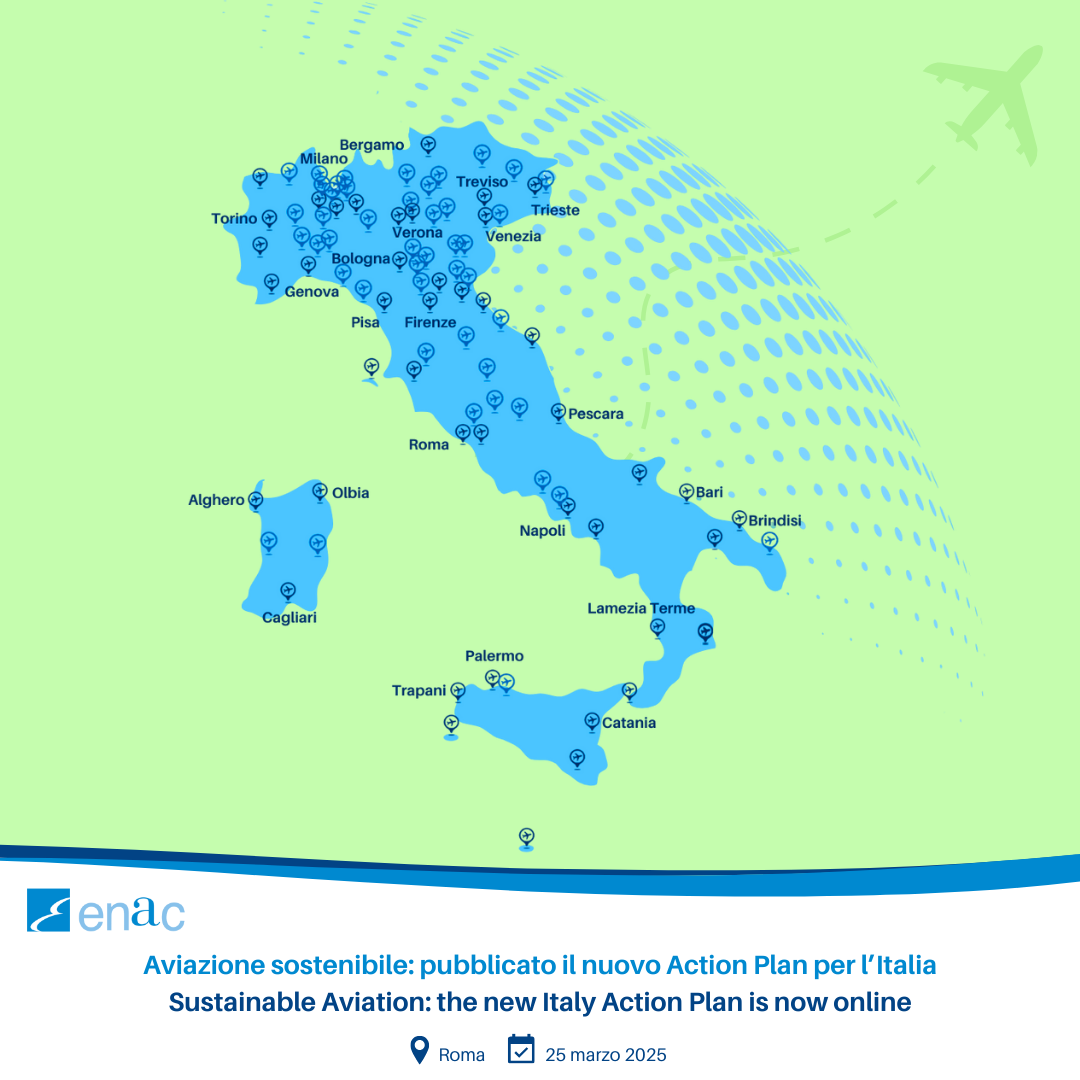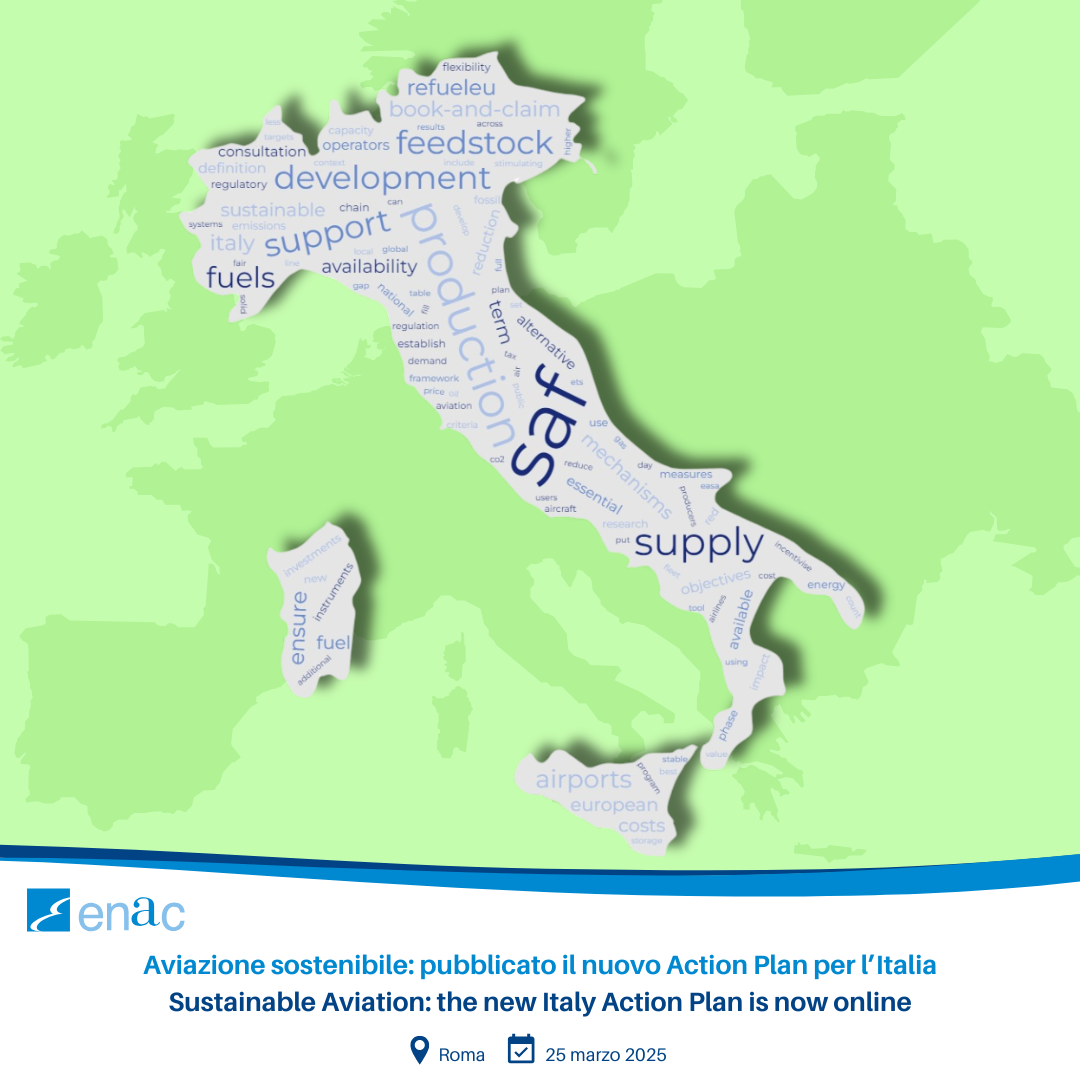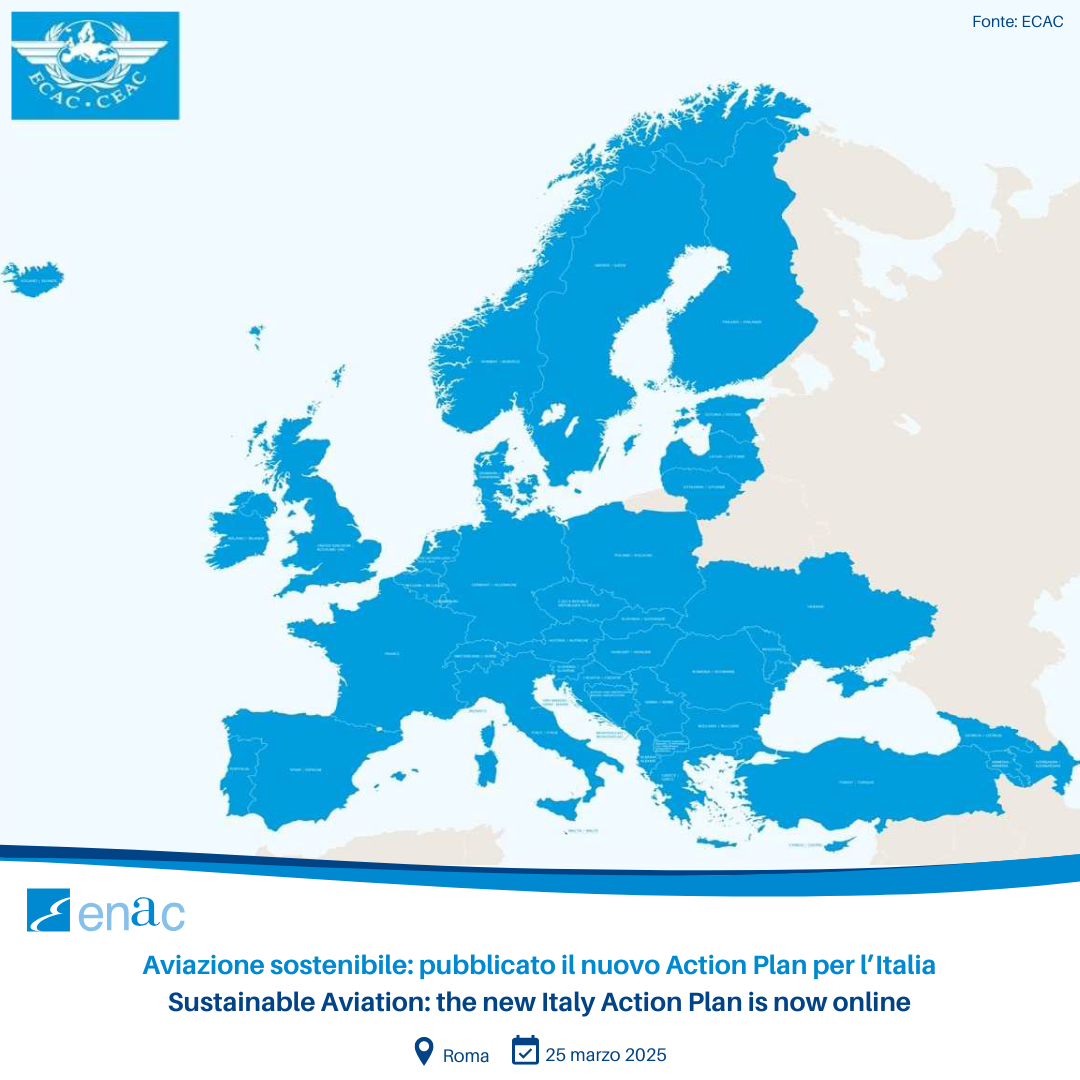On 14 March, ICAO (International Civil Aviation Organization) has published the document Italy Action Plan on CO2 Emissions Reduction – Edition 2024, which is the outcome of a work coordinated by ENAC to update the Action Plan as required by the ICAO Assembly Resolution A37-19 of 2010 and its subsequent reaffirmations up to the most recent A41-21 of 2022. This is in fact the fifth edition published by the Authority, which follows on from previous editions published every three years since 2012.
In accordance with the guidelines of both ICAO and ECAC (European Civil Aviation Conference), the Action Plan has been drawn up in order to provide projected scenarios up to 2050 regarding the environmental impact – in terms of CO2 emissions – of aviation, providing an estimate of how much each intervention belonging to the ‘basket of measures’ can contribute to the achievement by 2050 of the so-called ‘Long Term global Aspirational Goal’ (LTAG) for net-zero CO2 emissions from international aviation.
In the first section of the document, prepared by ECAC in cooperation with the European Union Aviation Safety Agency (EASA) and EUROCONTROL and endorsed by the European Commission, these scenarios are presented considering the mitigation actions taken in Europe collectively; the second section provides an analysis focused on Italy, always referring to international air traffic.
The preparation of the national section of the Action Plan have been coordinated by ENAC Environment and Sustainable Mobility Department, which since the beginning of 2024 has conducted data collection from aircraft operators, airport managing bodies and air navigation service providers operating in Italy, aimed at quantifying for each of them the expected benefits in terms of fuel savings from the measures implemented, both in the short and in the long term.
Data have been collected from 23 aircraft operators and 20 airport managing bodies, which together generate around 80% of international air traffic in Italy, as well as from ENAV S.p.A., whose contribution as an air navigation service provider is essential for estimating the benefits deriving from the improvements in Air Traffic Management and operations’ efficiency.
In line with the outcomes of the aggregated analyses carried out at European level, the results at national level show that, in a projected scenario in which air traffic growth will continue with an average value of +2% per year, CO2 emissions can be kept at the same levels of 2020 pre-pandemic period, only if all the mitigation measures, such as fleet renewal, more efficient operations and replacement of fossil fuels with SAF (Sustainable Aviation Fuels), will be put in place.
The data elaborated show that the higher expectations derive from the measures that can be implemented by aircraft operators, and in particular from the renewal of aircraft and components for the next 15 years or so, whereas in the longer period most benefits will derive from the use of SAF, whose introduction will be driven by the supply mandate introduced with the Refuel EU Aviation Regulation.
As this study confirms the primary role of SAF in achieving the LTAG, the document highlights the action started by ENAC in 2023 with the publication of a roadmap for the development of the SAF market in Italy. Therefore, the Action Plan provides the opportunity to reiterate that Italy’s main priority in the context of decarbonizing air transport lies in favoring the scalability of SAF, through policies that encourage the use of these fuels by aircraft operators and lead to the reduction of the current cost differential with respect to fossil jet fuels.
While thanking the organizations and people who contributed to this study, sharing data and information as well as participating in the dialogue within the National Observatory on SAF, ENAC underlines that the Action Plan gives evidence in an even broader context of how the efforts of all the stakeholders can contribute to the objective of reconciling air transport with the environment without causing depression in a sector that drives economic and cultural exchanges in the world.
The Action Plan can be downloaded from the following websites:
- ICAO: https://www.icao.int/environmental-protection/pages/climatechange_actionplan.aspx
- ECAC: https://www.ecac-ceac.org/activities/environment/european-aviation-and-environment-working-group-eaeg/european-action-plans-publicly-available
- ENAC: https://www.enac.gov.it/licao-state-action-plan-per-la-riduzione-della-co2/
Gallery
Ultimo aggiornamento: 27/03/2025


